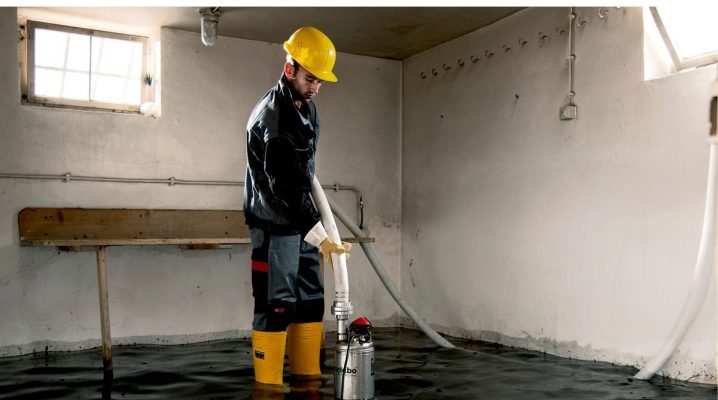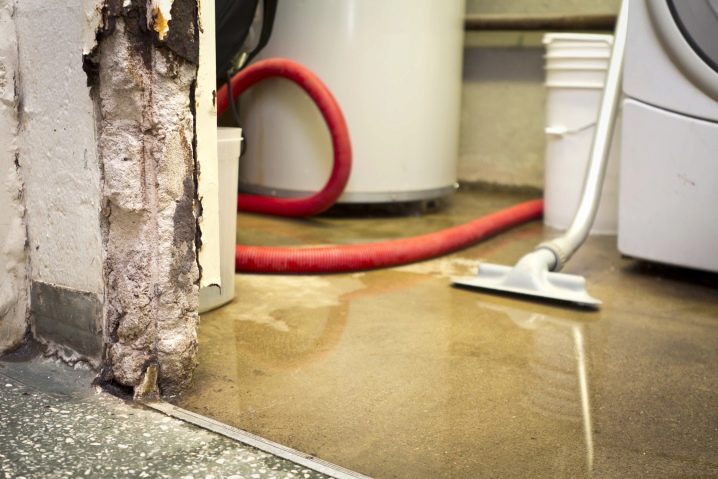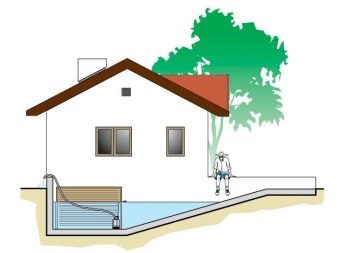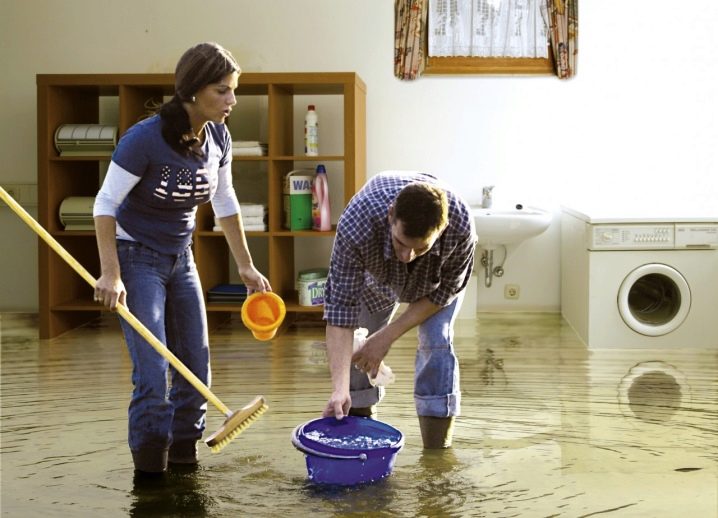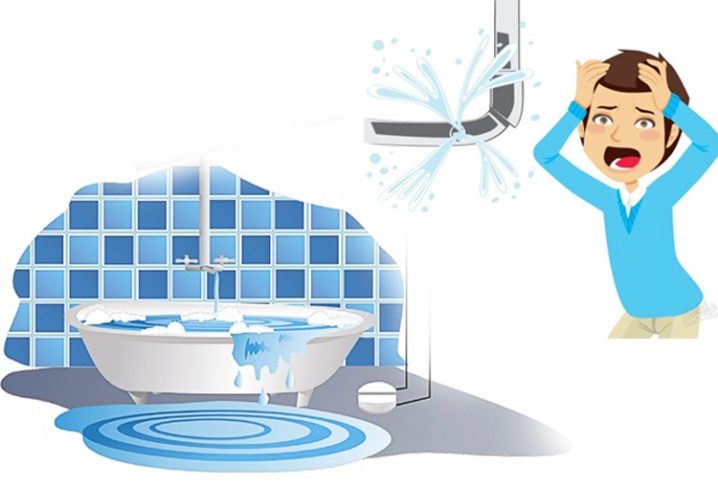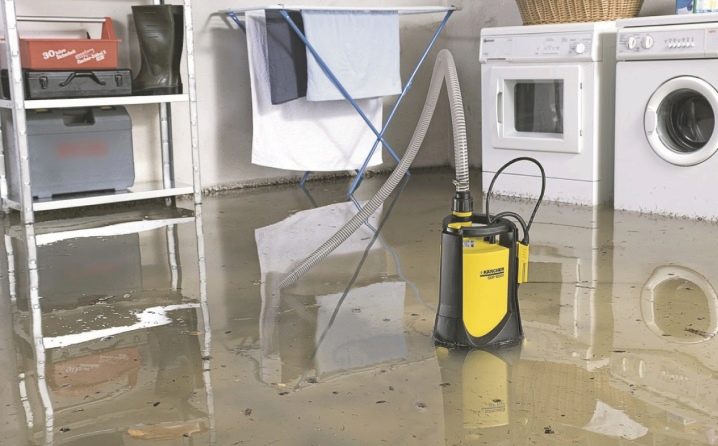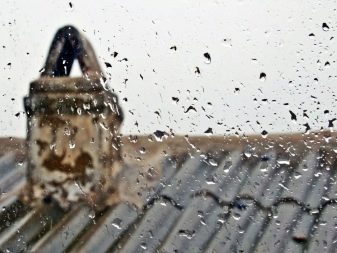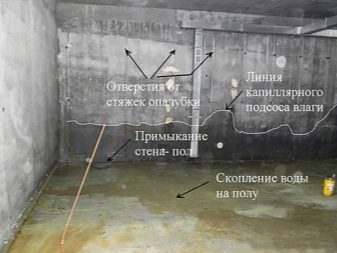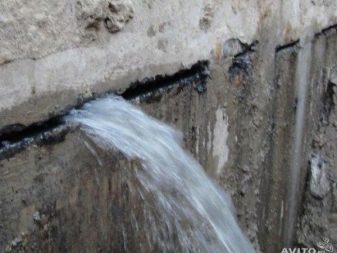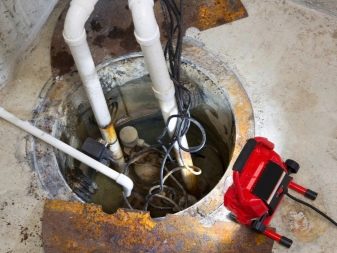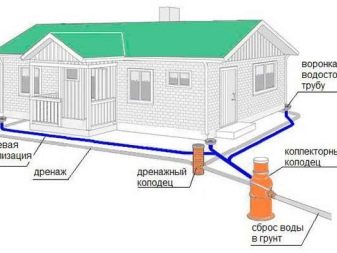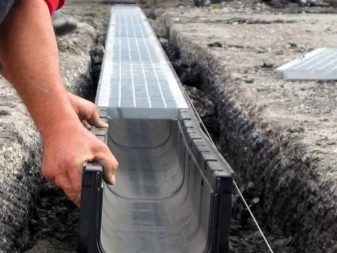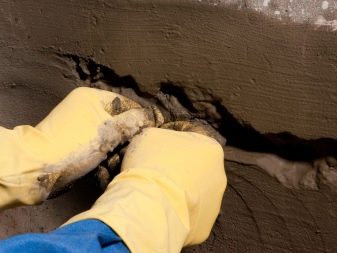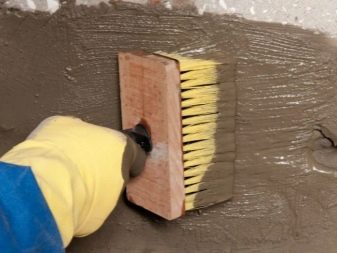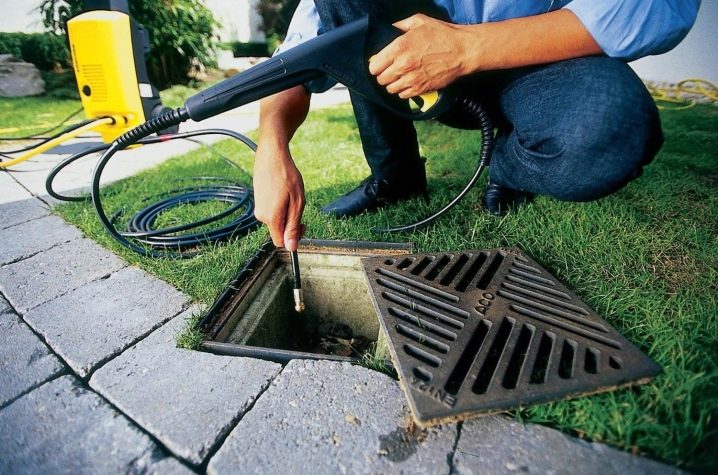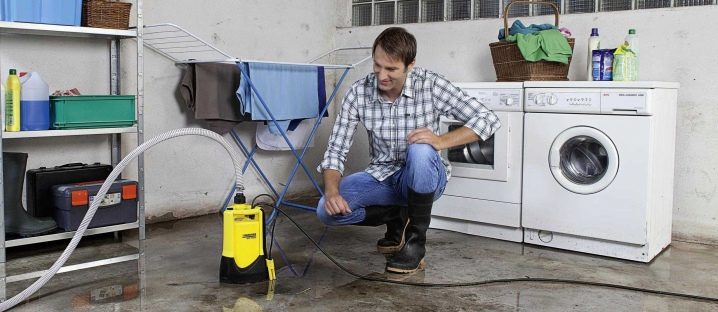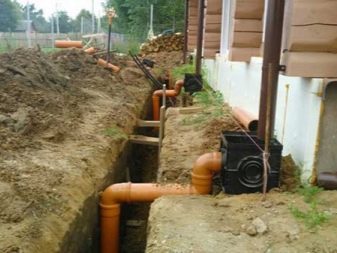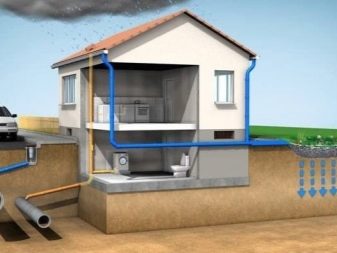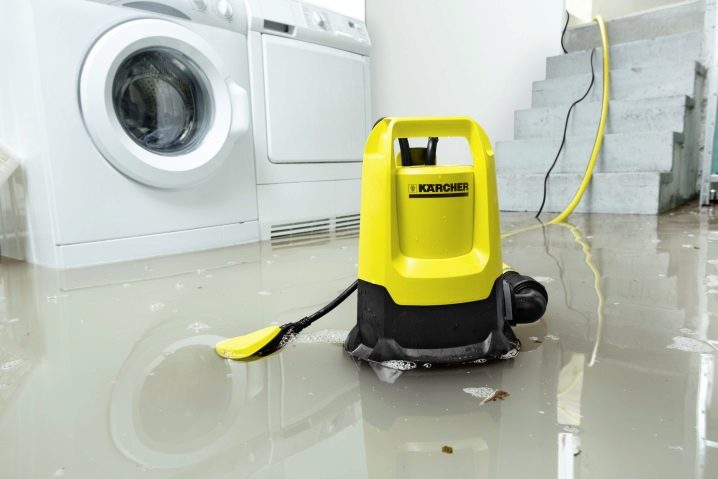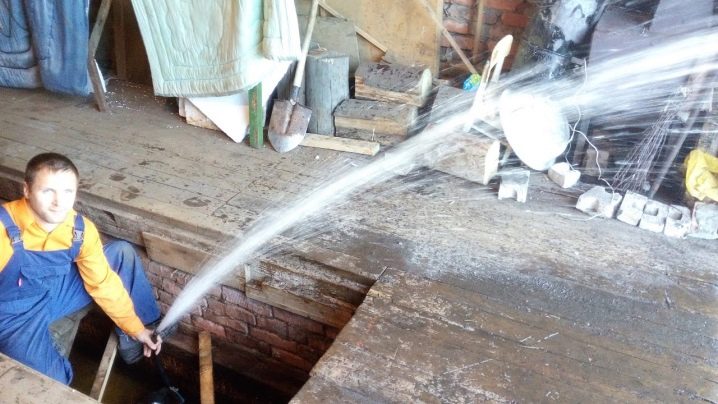Water in the basement of a private house: what to do?
Water in the basement of a private house appears in the summer and spring. This can happen to any building, even if it has never been flooded before.
Causes of flooding
Floods occur during heavy rains in the summer or rapid melting of snow in the spring, and water also drowns the underground in dry weather. The reason for the occurrence of such a phenomenon is the seepage or flow through walls or the foundation from surface water and storm sewers.
It is important to remember several factors.
- Basements are prone to flooding. This is the lowest level of the building, built in part or completely below ground level.
- Groundwater below ground level. The groundwater level may be higher than the basement floor.
- Sewerage is located in the ground. This includes all varieties - storm, sanitary and combined. In most cases, the sewage system is lower than the basement, the water level in sewer systems is higher than the basement floor level.
If the groundwater level or sewage system around the house is higher than the floor level, the liquid will automatically flow into the basement. For example, a crack in the foundation floor provides the ideal way for water to go underground.
Sewage pipes always have a direction to the house and back from it. Under normal conditions, water flows from the house to the sewer. If the system is disturbed, there is a possibility of the reverse process - the liquid will go to the house.
Main problems:
- the slope of the earth promotes the flow of water to the house;
- destroyed foundation - cracks that allow water to flow down;
- problems with pipes.
Flooding during dry weather
Most floods occur during wet weather, but it is possible that flooding will occur in dry weather. There are three common reasons:
- Blocked or broken sanitary unit. Sewerage eventually goes out of working condition.For example, the roots of trees can penetrate to the pipe and subject it to deformation. In this case, the normal discharge of the fluid is blocked, and accumulation and inhibition of the drainage processes occurs. This is usually the waste water of your own house, which floods the basement. The leakage of fluid from the shower, toilet, sink. A broken structure needs maintenance, and as a result, it must be replaced or rehabilitated.
- Clogging plumbing hub. Another reason for blocking the sanitary sewer is that it is flushed down the toilet. There is a list of things that should not be thrown into the toilet.
In case of blockage, it is better to seek help from a specialist. Toilets are designed for human waste and toilet paper.
- Failed to drain the foundations. Sections in basements are sometimes built in the lower areas, which are usually more humid than others. In such cases, a foundation drainage system, such as a pump, must operate continuously to maintain the groundwater level around the foundation below the basement floor. If the system fails, the fluid fills the basement.
Flooding during wet weather
Basement flooding during wet weather is more common than flooding in dry weather. Rain, melt water load drainage systems, sewer pipes, found under the ground. With such a load on the surface, there are reasons why water leaked into the basement.
Surface inflow or flooding on the surface of the earth. During periods of heavy rain or melting snow, surface waters merge around the house or accumulate in hard-to-reach places, such as access roads or roads adjacent to the house.
Waterproofing is considered part of the foundation drainage system. In this category, there are three main causes of foundation flooding, all of which are generally the result of excessive groundwater around the foundation.
- Trickle down If the groundwater level rises, fluid can enter the basement through cracks, holes, and other paths. Usually it is an old house or fragile materials, especially wooden structures, which have a porous structure.
If the drainage materials and pipes around the foundation are disturbed, water can also get to the foundation floor or walls through cracks and holes.This will occur during heavy rains, periods of snow thawing, when there is a lot of water in the ground.
- Pump failure If a pump is installed in the basement, the item will need to be adjusted to work efficiently. Pumps with proper operation and good service pump excess water over the base of the house and from it. This water should be directed to the lawn or storm sewer. If the pumps cannot support operation, possibly due to a power failure or malfunction, the groundwater level around the foundation rises to such an extent that it flows out of the sump to the basement floor.
- Filled sewer. This means that the pipes are filled, and the water level in the hatches can rise above the top of the pipe. The main reason for this is the excess water in the sewer system, which ultimately overloads the sewer with a large amount of water.
How to get rid?
In the flooded basement you need to eliminate the liquid. The important thing is to preserve the integrity of the underground and, if necessary, to remove the things that the water floods.
Such a basement not only has an unpleasant smell, but also represents a great risk to save the house.Moisture in the underground destroys the floors and walls, contributes to the appearance of mold, even can damage the roof.
It is necessary to deal with moisture immediately, because the fungus will harm property and health of residents.
Some basements are easy to dry, clean the gutters and make a drain on the water from the basement. But if the problem comes from other sources - the liquid flows to the house on the surface, seeping out of the ground, you need to take more active steps.
There are several ways to get rid of the liquid in the basement:
- Add gutter extension. If the drainpipes release water less than 1.5 kilometers from the house, you need to direct the water further by adding plastic or metal gutters. Permanent underground drainage pipe is invisible and can move a large amount of sewage into the sewer much farther from home.
- Pipe surface rupture. If the fluid flows into the basement through cracks or gaps around the water pipes, you can manually block the holes using hydraulic cement or polyurethane.
If the fluid rises through the floor, the problem lies in the groundwater, and blocking the holes with compositions will not help.
- Restoration of the earth surface around the house. Over time, the soil settles around the foundation. To restore this area will require a clay-loam mixture.
- Recovery of sewers. If water flows in a subfield low on the walls or in the seams, where the walls go to the floor, the problem is hydrostatic pressure pushing water from the ground. It is necessary to check where the underground pipes are installed to remove water from the foundation. You will need to look for a manhole or drainage in the basement.
If the drains are clogged, do the cleaning and flush the pipes with a garden hose. If this does not work, you should call the plumber, plumber.
- Pump. To create an internal drain system, you need to make a channel along the perimeter of the floor, pour concrete and lay a perforated pipe into the hole. The item goes to the tank in a low basement location.
Such a system is the best and least disruptive option for a basement. This is a good choice if the yard is filled with flowers and greens that destroy the external drainage system.
- Water resistant wall. Installing an internal drainage system removes water, but does not make it waterproof.This requires an external system - a drain, which will reduce the hydrostatic pressure and external waterproofing to protect the foundation.
This is a great job requiring an excavation around the house. The disadvantage is the removal of the well, if there is one in the yard.
How to prevent the occurrence?
There are several methods to preserve dryness and avoid flooding the basement:
- Focus on prevention. Before a flood situation arises, you need to inspect your property from the inside and outside, and determine what are the ways to get rainwater out of the house.
- Remove leaves in spring and autumn from gutter. Blocked canals force all the water on the roof to flow onto the foundation, increasing the likelihood of the basement flooding.
- Stretch the rain gutter outside the house, you can hide it in the pit. For fixing the parts, the reinforcement is made with a mortar using a small concrete plant, which is located on the site. Do not connect drainpipes to dry underground wells. This will lead to the fact that the water on the roof nourishes the earth even more and in the future the fluid will not stop, it will reach the basement.
- During a heavy shower, watch how water accumulates around the house and see the main flow of the fluid. If surface water is directed to a built dwelling, contact your local contractor for advice on how to protect the yard so that water is directed from the dwelling.
- Emergency electricity. Install an automatic generator to provide electrical service for important equipment, such as a stove or electric heating, a borehole pump, a refrigerator, a pump for septic purposes, in the event of a power loss. It is important to choose a place where there will be complete isolation from the liquid. Without emergency backup power, you can return home to the flooded basement, frozen water pipes and a broken septic tank.
- Insure property against flooding.
Tips
Drainpipes tend to constantly clog up, holes appear on the surface of objects. Water flows along them down the perimeter of the house, and not to the corners and from the house.
The groundwater level can be high in the ground. The layer of the earth becomes wet, and puddles form on the surface; if there are cracks on the foundation of the house, the liquid will seep into the basement.
Many people know that their home has this problem, and they chose to install a sump to remedy the situation.
However, if the housing is only now beginning to crack in its base, you need to quickly take care of solving the problem.
Important tips for flooding a basement include a few points.
- The choice of equipment. As soon as water appeared in the basement, it is necessary to remove the liquid. If flooding is insignificant, then dry the wet areas with towels and a mop. In case of deep flooding, the equipment must be used: a sump pump, a water vacuum.
- Removal of fluid. After selecting the equipment you need to decide how to remove the liquid from the basement. The pump will need an outlet for pumping water. If the underground is flooded, then the drains in the basement may not be available to drain. You will need a hose for attachment to the pump to drain it through windows or doors to drain the fluid.
- Drying square. If the rain is over, you need to open the window to remove moisture from the room. As soon as the water is removed from the basement floor, it is time to start drying the area. If the heating operation is not affected by flooding, turn on heating to a higher temperature,to assist in the drying process. It is important to remember to open the windows in order to release moisture. Heat will evaporate water in the air. And they also use a fan to circulate air and accelerate the drying process.
Another way to dry a basement is to use a desiccant. When operating this equipment, it is important to close the windows and doors so that it works correctly.
When the dryer no longer removes moisture from the underground, you need to place it in another area of the basement and turn it on again. It may be necessary to invite a specialist if the heating system is not working due to the flooding of the underground.
For more information on how to deal with water in the basement, see the following video.
